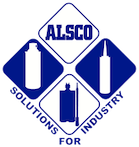Showing 13–24 of 43 results
-

Geobond HM 290ml White
£6.34 Excl VATAdd to basketSold only in Full Box Quantities.
No shrinkage
High UV and aggressive atmosphere resistance
Excellent resistance to oils and solvents
Good abrasion resistance
Excellent primer less adhesion to a wide range of substrates -
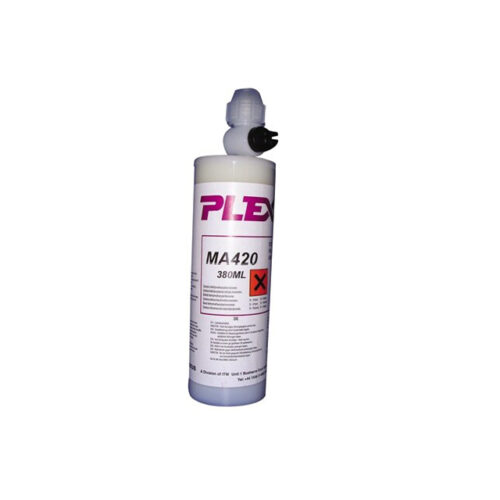
ITW Plexus MA420 – 380ml Blue
£41.73 Excl VATRead moreSold only in Full Box Quantities.
Two part methacrylate adhesive
Mixing ratio 1:1
Requires no surface preparation
Working time 4-6 minutes
Fixture time 18-22 minutesPlexus MA420 is a high-strength, two-part methacrylate adhesive with a wide range of applications. It delivers superior performance with its high shear strength, excellent fatigue resistance and exceptional tensile elongation.
This product is ideal for bonding composite assemblies. It also works well when bonding dissimilar materials together, such as metal to plastic. The Plexus MA420 adhesive can be applied either manually or through automated equipment and is designed to provide instant bonds with minimal shrinkage for reduced stress on the substrates being bonded.
Plexus MA420 is manufactured by ITW Plexus, a member company of ITW Performance Polymers and one of its five divisions. ITW offers various adhesive solutions, including hardware lubricants, sealants & adhesives.
-
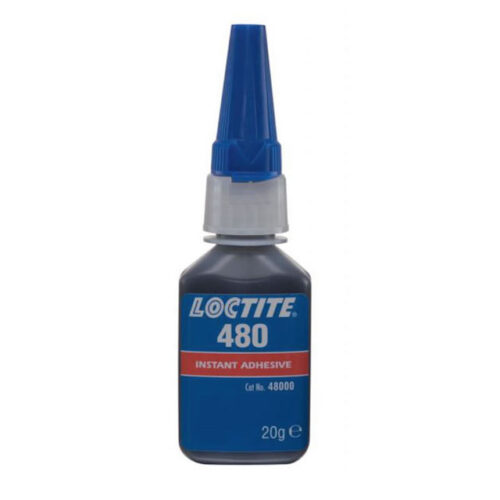
Loctite 480 20grm Black
£27.95 Excl VATAdd to basketSold only in Full Box Quantities.
Toughened Fast Curing Instant AdhesiveIdeal for bonding metal to metal, to rubber or magnets
Good resistance in humid environments
-
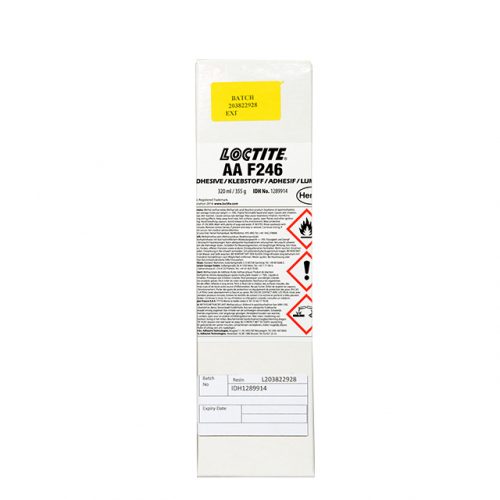
Loctite F246 – 320ml Brown
£92.91 Excl VATAdd to basketSold only in Full Box Quantities.
2 Part “no mix” Structural acrylic adhesive
Cures rapidly at room temperature
Must be used with an initiator (usually Initiator No 5)
High Strength
Ideal for applications involving heavy shock, vibration, stress levels and high temperatures -
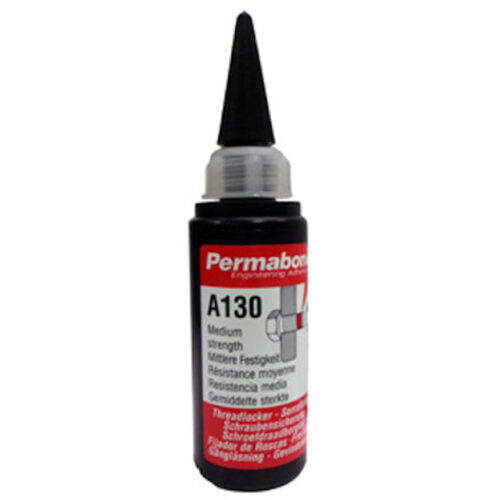
Permabond A130 50ml Blue
£18.81 Excl VATAdd to basketSold only in Full Box Quantities.
Excellent Chemical resistance
Vibration resistant
Lubricates threads for easier assembly
Provides corrosion protection
WRAS drinking water approval -

Permabond ET5428 Off-White 50ML
£16.81 Excl VATAdd to basketSold in full box quantities only.
Thixotropic two-part adhesive
Ideal for bonding composite materials
Easy to apply.
High shear and peel strength
Rapid cure speed
High temperature resistance
-
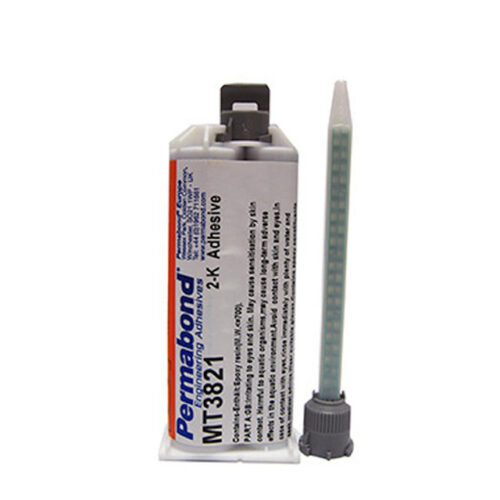
Permabond MT3821 50ml Black
£12.42 Excl VATRead moreSold only in Full Box Quantities.
Adhesion to a wide variety of substrates
Full cure at room temperature
Easy to apply
Soft and flexible -
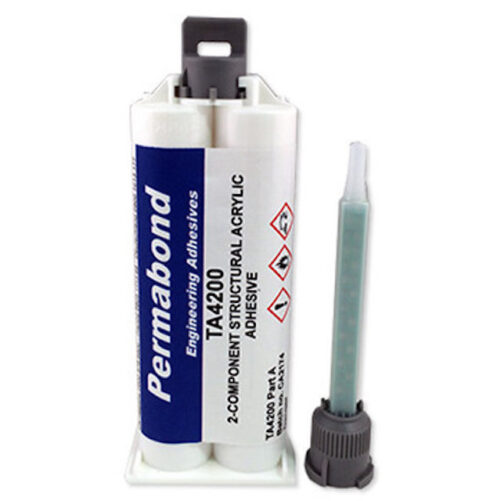
Permabond TA4200R 400ml Cream
£33.78 Excl VATRead moreSold only in Full Box Quantities.
Cures rapidly at room temperatureTwo part structural adhesive
Good gap filling properties
-
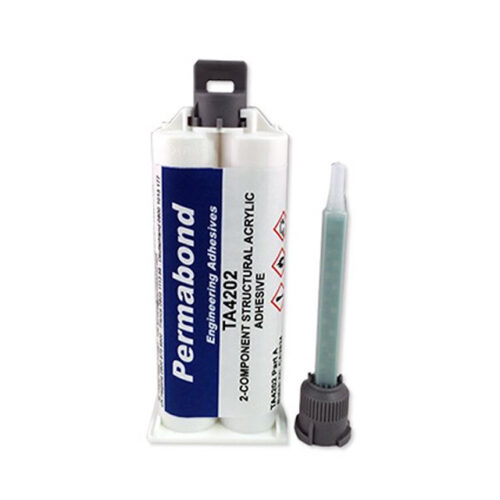
Permabond TA4202 50ml Pink/Green
£10.45 Excl VATRead moreSold only in Full Box Quantities.
Adhesion to a wide variety of substrates
Fast cure at room temperature
Can be used with or without a nozzle
High shear and peel strength
Good impact strength -
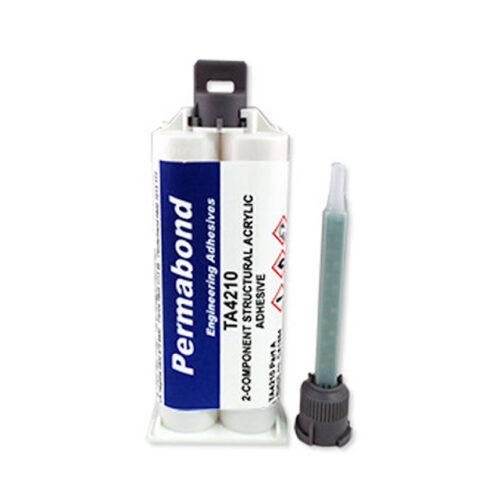
Permabond TA4210 – 400ml
£46.37 Excl VATAdd to basketSold only in Full Box Quantities.
Adhesion to a wide variety of substrates
Extended nozzle life / pot life
High shear and peel strength
Good impact strength
Good chemical resistanceLooking for a reliable bonding adhesive? The TA4210 is one of the best adhesives used in the automotive industry, manufacturing, construction and more. The TA4210 offers superior bonding capabilities for a wide range of substrates, including metals, plastics and composites. With the TA4210, you can trust that your assemblies will stay together, providing long-lasting and reliable performance.
-
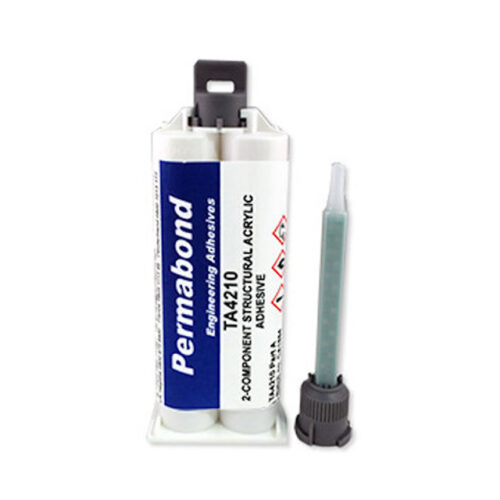
Permabond TA4210 – 50ml
£9.12 Excl VATRead moreSold only in Full Box Quantities.
Adhesion to a wide variety of substrates
Extended nozzle life / pot life
High shear and peel strength
Good impact strength
Good chemical resistance -
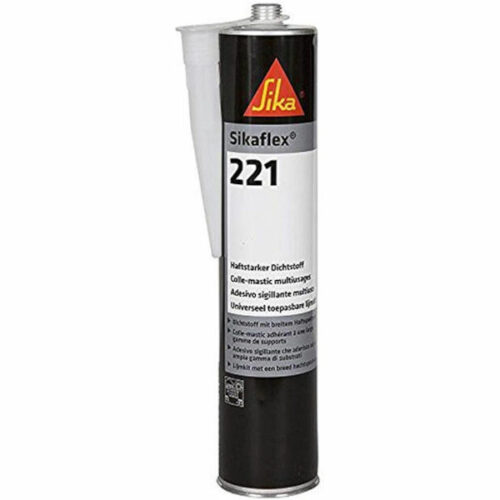
Sikaflex 221 – 300ml
£8.91 Excl VATSelect optionsSold only in Full Box Quantities.
Single component polyurethane
Suitable on a wide variety of materials
Odourless
Can be over painted
Resistant to ageing and weather exposure
FAQs
What Is an Industrial Strength Adhesive Used for?Adhesives play a highly significant role in industrial manufacturing processes. Industrial adhesives are commonly used for bonding and assembling components in various sectors, including Automotive, Marine, Transportation, Renewables, construction (including modular builds) electronics, wood and many other industries. These industries leverage industrial strength adhesives in manufacturing products that we use in our day-to-day lives.
Automotive: Industrial adhesives are extensively from the chassis to interior and external sub components and glazing to improve aesthetics and increase torsional stiffness.
Transportation: Building up from an OEM chassis, commercial vehicles structures are extensively bonded and sealed internally and externally to create a multitude of finished designs for freight vehicles, caravans, motorhomes, emergency service vehicles and military uses.
Renewables: Many new technologies linked to power generation are originally constructed using adhesives and sealant technologies and also maintained “in the field” using these to repair, overhaul and maintain their efficiency and longevity.
Construction: Commonly used cement based mortars and grout are being increasingly supplemented with the use of new chemical polymer based adhesives and sealants in a multitude of construction applications in domestic, commercial and office structures to meet the ever increasing demands for thermal improvements and energy efficiency.
Marine: Industrial adhesives play a significant role in the assembly of boats and ships in hull construction, glazing, decking and sub components.
Other markets covered by adhesives and sealants include Electrical, HVAC, Woodworking, Furniture, Containers, Recreational products, sports equipment and many others.
There are natural adhesives and synthetic adhesives. Natural adhesives as they suggest are derived from naturally occurring raw materials such as rubbers, cements, silicone, plant and other organic derivatives. In the case of synthetic adhesives, these are generally derived from oil based stocks and the refining creates a range of raw materials that are formulated into different polymers types, these polymers can then be used to build a wide array of chemical based adhesives and sealants which form strong permanent adhesion to surfaces resistant to heat, vibration, chemicals and many other atmospheric conditions.
The range of adhesives for industrial applications is very broad, which explains why these adhesives are available in such a wide variety of forms. They can be classified in several ways, such as according to their cure mechanism, adhesion properties and chemical composition. Here are some common types of industrial adhesives:
Acrylic: It offers excellent performance in adverse weather conditions. There is a relatively long setting time for this type of adhesive. However, you can accelerate the process by using heat or activators.
Epoxy: This type of adhesive is commonly used in aerospace, Industrial and automotive industries. It is capable of curing quickly and bonding metal, plastics, composites and construction surfaces well. Moreover, it is capable of handling high mechanical stresses, but can be brittle and subsequently poor at dealing with dynamic forces and coefficient of expansion between different material types.
Polyurethane: It is highly flexible and impact-resistant, and it also offers outstanding durability, although is susceptible to UV degradation. Polyurethane adhesives are used in automotive, marine, construction and woodworking projects, may need primers for use on some surfaces.
Silicone: Industrial silicone adhesive is notable for its high degree of flexibility, good sealing properties and high resistance to high temperatures, solvents and UV. It’s commonly used in the construction, glazing, marine and plumbing industries. High atmospheric moisture content (50% relative humidity) is necessary before single-component silicone adhesives undergo polymerisation. In a case where the temperature or humidity are very low, this can either significantly slow down or prevent cure and it may be more appropriate to use a two-component variant. Silicone products are not overpaintable and are often excluded for use (either close to or in the entire factory) where pain is applied to finished assemblies or vehicles.
MS Polymer /Hybrid these are new generation flexible adhesive and sealants combining the good adhesion of polyurethanes and the atmospheric resistance of silicones, but can be overpainted. These products also offer users the benefits of primerless adhesion in most cases when compared with Polyurethane products, so are almost universal in their uses and applications.
Hot melt: As eluded by the name, these are applied hot and require an applicator gun to heat from a solid form to a more liquified state for application, they offer instant adhesion once cooled. Supplied in thin “pencil”, or stubby “slug” form as well as bulk, they offer good adhesion to most surfaces but for more arduous applications may need to be supplemented in conjunction with more structural adhesives.
Contact: A solid adhesive thinned with solvents, obtaining strength and adhesion through the evaporation of the solvent leaving the residual rubber-like material on the surface. This kind of adhesive is rapid curing and can be used to bond different materials temporarily or permanently. It is suitable for use on porous and uneven surfaces and provides some flexibility once cured.
Anaerobic: This type of adhesive does not require the use of oxygen to set, so generally ideal for applications with very tight tolerances such as bolts into threads, they generally work best metal to metal, with some slower than others, dependant on the level of reactivity between the two metal surfaces.
Cynoacrylate commonly known as “superglue” are adhesives using atmospheric or surface moisture to cure instantly. Predominantly clear, some are toughened with the addition of rubbers making them black but to give a more flexible impact resistant bond. Generally they are not suitable for applications where subjected to or immersed in water as this leads to ultimate bond failure over time.
Conductive: Common industries that use conductive adhesives are construction and those that want to prevent electrostatic discharge (ESD). Certain sealants can also have conductive dielectric properties for use in electrical and power generation applications to prevent power spikes and power outages.
Pressure-sensitive: This type of adhesive can be activated without the need for solvents, water or heat. It is designed to create a strong bond and maintain it at room temperatures. They are activated by two surfaces coming together where a certain pressure needs to be applied to force adhesion to the surfaces being bonded, most industrial tapes work in this method too.
UV curing: This adhesive relies on UV light to initiate the curing process, so generally work best on clear surfaces to allow the light to penetrate through to cure. Can be used for Industrial and automotive lighting along with decorative glass and plastic bonding.
This is the key question and why expert advice is critical from the outset to ensure all aspects are considered to eliminate future problems. When selecting which adhesive to use on a project, you will initially need to consider the surfaces being bonded/sealed and how these will ideally be assembled including production time constraints and operator use.
The ideal solution will need to incorporate the environmental conditions the bonded assembly will operate in such as operating temperature range, humidity, exposure to the UV radiation, chemicals, mechanical and dynamic stress factors and overpaintability considerations.
There are different ways to remove industrial adhesives. First, you can try using an industrial-grade adhesive remover. However, it should be noted that it might damage certain surfaces. Another method you can use is applying heat to remove the adhesive. When heated, some adhesives melt or soften, enabling easier removal. And when the surface is hot enough, you can try to gently scrape away the glue with a small scraper. In many cases as Industrial Adhesives are designed to provide permanent adhesion, some bonded assemblies may not be able to be separated without totally destroying the assembled parts, or only mechanical abrasion will remove residues.
